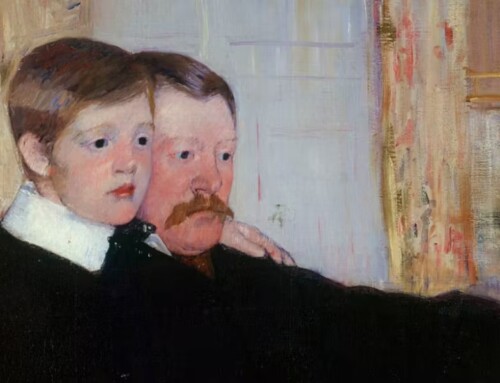For the first time in its long history, the 2013 and 2014 National Health Interview Survey included a question on sexual orientation, providing health information on sexual minorities from one of the nation’s leading health surveys. A study which examined those results, published in The Journal of the American Medical Association, found that gay, lesbian and bisexual individuals reported more health problems than straight men and women:
“…gay men were more likely to report severe psychological distress, heavy drinking, and moderate smoking than heterosexual men; bisexual men were more likely to report severe psychological distress, heavy drinking, and heavy smoking than heterosexual men; lesbian women were more likely to report moderate psychological distress, poor or fair health, multiple chronic conditions, heavy drinking, and heavy smoking than heterosexual women; and bisexual women were more likely to report multiple chronic conditions, severe psychological distress, heavy drinking, and moderate smoking than heterosexual women.”1.
Like most studies published after the 1973 removal of homosexuality as a mental illness from the American Psychiatric Association’s Diagnostic and Statistical Manual of Mental Disorders, these disparities between, in particular, the psychological health of homosexual and heterosexual persons is explained by “the stressors that LGB people experience as a result of interpersonal and structural discrimination.”
Yet, in countries with long histories of cultural and societal tolerance as well as institutional inclusion of homosexuality, rates of mental disorders among gay men and women still remain abnormally high:
“Despite the Netherlands’ reputation as a world leader with respect to gay rights, homosexual Dutch men have much higher rates of mood disorders, anxiety disorders and suicide attempts than heterosexual Dutch men.”2
In addition, two previous representative studies of Dutch adults found that gay men were three times more likely than heterosexual men to report a mood disorder or anxiety disorder, and ten times more likely to report suicidal thoughts.3-4
There is also another concurrent 2016 study from Sweden which found that: “Both suicidal ideation and attempts were more commonly reported by lesbian/gay and bisexual (LGB) individuals…Gay men evidenced higher risk as compared to heterosexual men. Recurrent medical care was more frequent in LGB individuals, especially in bisexual women and gay men.”5
Another recent cumulative study published in the “American Journal of Public Health” reached the following conclusion: “…sexual minorities had a higher lifetime prevalence of suicide attempts than heterosexual persons;” according to this same study: 20% of LBG respondents had attempted suicide as opposed to 4% of heterosexual respondents.6
Part and parcel with this persistent evidence of mental illness in the gay community is the continual and related rise of self-destructive sexual practices among homosexual males: there has been a long-term decline in condom use by American gay men, according to researchers from the Centers for Disease Control and Prevention:
“In 2005, 28.7% of HIV-negative men reported sex without a condom, rising to 32.8% in 2008, 34.7% in 2011 and 40.5% in 2014.”
This has created a situation in which the HIV epidemic within the gay male population is sustained through the constant inflow of younger homosexual males; one recent study from the Netherlands found that:
“The resurgent HIV epidemic amongst MSM in the Netherlands is driven by several large, persistent, self-sustaining, and, in many cases, growing sub-epidemics shifting towards new generations of MSM. Many of the sub-epidemics have been present since the early epidemic, to which new sub-epidemics are being added.
These findings suggest that several large, persistent, and self-sustaining sub-epidemics, many of which have been present since early in the AIDS epidemic, are driving the resurgent HIV epidemic among MSM in the Netherlands, despite the widespread availability of treatment, increasing rates of diagnosis, and earlier treatment initiation.”7
In the United States, new HIV diagnoses among gay and bisexual men between the ages of 13 and 24 increased by a staggering 132.5% between 2001 and 2011, according to a report from the Centers for Disease Control and Prevention…But the annual diagnosis rate for the general American population dropped by a third over the same time period.8
In the United States: “Young gay and bisexual men accounted for 92% of all new HIV diagnoses in people aged 13-24 in 2014.”
For the most part, this sad reality is due to the fact that young men and women who experience same-sex attraction, seek out comfort and solace within the only social structure available to them – the “gay” community. Oftentimes, somewhat naive, but earnestly in search of love, they discover a culture steeped in sexual promiscuity, where – the extremes are readily available. When you include into this mix of anguished and lonely young people, who have a universe of sexual exploration suddenly open to them, an incurable disease – you get the makings of a disaster. Yet, many soon realize this – only, they have nowhere else to go.
The feeble attempts by several mainline Christian denominations, including Catholicism, to reach out to these individuals has resulted in gay, lesbian, and LGBT “ministries” that are awash in rainbow symbolism, gay-affirming language, boldly apparent in their names, such as the Catholic Ministry with Lesbian and Gay Persons in the Archdiocese of Los Angeles, and their constant participation in “gay” parades and the celebration of so-called “Pride” Masses. These ministries merely serve as conduits by which confused and conflicted individuals move back and forth between the divergent worlds of active homosexuality and Christianity. They simply confirm the orientation.
What is truly needed is a holistic approach which both treats and heals the psychological, the physical, and the spiritual dimensions of this problem.
1. Comparison of Health and Health Risk Factors Between Lesbian, Gay, and Bisexual Adults and Heterosexual Adults in the United States
Results From the National Health Interview Survey
Gilbert Gonzales, PhD, MHA, et al.
AMA Intern Med. Published online June 27, 2016.
2. “Exploring a Dutch paradox: an ethnographic investigation of gay men’s mental health”
Sanjay Aggarwala & Rene Gerrets
Culture, Health & Sexuality: An International Journal for Research, Intervention and Care
Volume 16, Issue 2, 2014
3. “Same-sex sexual behavior and psychiatric disorders: findings from the Netherlands Mental Health Survey and Incidence Study (NEMESIS).”
Sandfort TG, et al.
Arch Gen Psychiatry. 2001 Jan;58(1):85-91.
4. “Suicidality and sexual orientation: differences between men and women in a general population-based sample from the Netherlands.”
de Graaf R, et al.
Arch Sex Behav. 2006 Jun;35(3):253-62.
5. Self-reported suicide ideation and attempts, and medical care for intentional self-harm in lesbians, gays and bisexuals in Sweden.
Björkenstam C, et al.
J Epidemiol Community Health. 2016 Mar 4.
6. “Lifetime Prevalence of Suicide Attempts Among Sexual Minority Adults by Study Sampling Strategies: A Systematic Review and Meta-Analysis.”
Hottes TS, et al.
Am J Public Health. 2016 May.
7. Dispersion of the HIV-1 Epidemic in Men Who Have Sex with Men in the Netherlands: A Combined Mathematical Model and Phylogenetic Analysis
Daniela Bezemer, et al.
November 3, 2015
8. Trends in Diagnoses of HIV Infection in the United States, 2002-2011
Anna Satcher Johnson, MPH, et al.
JAMA. 2014;312(4):432-434.






They need aid in http://www.courage.net, not pride.
Thank you for compiling these important studies.
[…] The 2013 and 2014 National Health Interview Survey included a question on sexual orientation, providing health information on sexual minorities from one of the nation’s leading health surveys. A study which examined those results, published in The Journal of the American Medical Association, found that gay, lesbian and bisexual individuals reported more mental health problems than straight men and women. Like most studies published after the 1973 removal of homosexuality as a mental illness from the American Psychiatric Association’s Diagnostic and Statistical Manual of Mental Disorders, these disparities between, in particular, the psychological health of homosexual and heterosexual persons is explained by “the stressors that LGB people experience as a result of interpersonal and structural discrimination.” The results include increased levels of depression, anxiety and suicidal ideation. Read more in this article by Joseph Sciambra on his blog. […]
Thank you for writing about this important issue! I’m gay and deal with anxiety, depression and social anxiety. More research on this definitely needs to be done.